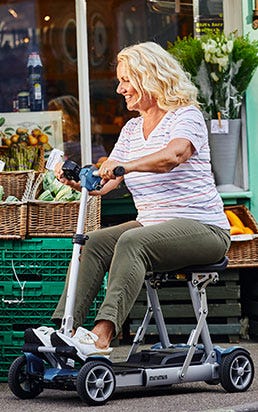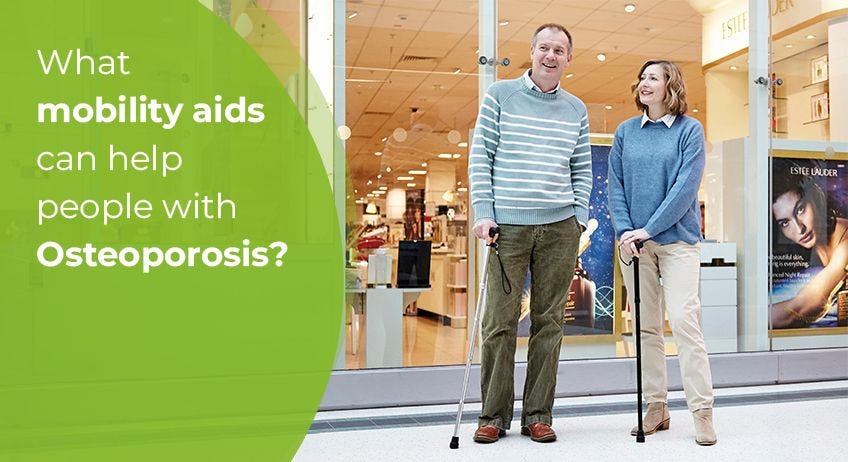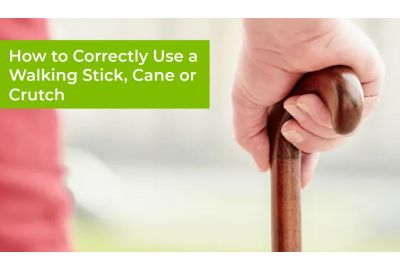What mobility aids can help people with Osteoporosis?
Osteoporosis is a condition that affects the bones. It causes them to become weak and brittle so that even mild stresses can cause breaks and fractures. Osteoporosis affects about three million people in the UK and there are an estimated half a million fragility fractures every year.
The condition can strike both sexes at any age but is more common in women over 50, as the hormone changes that are associated with the menopause directly affect bone density. The likelihood of developing osteoporosis increases with age and it is estimated that 70 percent of women over 80 are affected.
Living with osteoporosis can be challenging and it can quickly reduce your mobility. It can also lead to an increase in risk of falling. Fortunately, there are now many mobility aids that help improve comfort, safety and independence for those with the condition.
Mobility aids for safety and confidence
Mobility aids can be beneficial for people with osteoporosis to help reduce the risk of falls and improve their mobility and independence. Sometimes the fear of falling can be as debilitating as an actual fall, especially among those with osteoporosis. Mobility aids help to boost confidence in getting around unassisted.
There are numerous mobility aids that can be useful for individuals with osteoporosis. These include the following.
Crutches – typically used for temporary mobility assistance during recovery from a fracture or a surgical procedure, crutches come in different types, including forearm crutches and underarm crutches. You can even get them in fun colours, including pink and blue. There are also folding crutches that are strong and sturdy but can be packed away in a travel bag.
Canes & Walking Sticks – a walking cane has been the go-to for additional support for centuries to help balance and provide a little extra stability and support. A standard cane is unobtrusive and is suitable for those who just need a little extra help. Alternatively, quad canes, with a wider base for added stability, and offset canes, which have a curved handle, provide additional support.
Walking frames – a walker offers a higher level of stability and support than a cane. With four legs and a frame construction, there is a wide base of support, so the user can place more weight on it. Walkers either have four feet for optimum stability or two feet and two wheels to make them more manoeuvrable.
Rollators – also known as rolling walkers, rollators are a little like walkers, only they have wheels. Often equipped with a built-in seat, they provide the opportunity for users to sit and rest. Integrated storage pouches or under-seat storage boxes make rollators a useful aid for those with osteoporosis, who can shop independently with the reassurance of being able to sit and take a time-out at any time. They greatly reduce the risk of falling too.
Wheelchairs – for more severe cases of osteoporosis or where users have other conditions that prevent them from walking any distance, a wheelchair provides the ideal means of getting out and about. Manual wheelchairs can be wheeled by hand, and some can be pushed by an attendant.
They come in different styles and designs, including transit wheelchairs, which are lightweight and can folded up for stowing in a car, train or plane. Electric wheelchairs provide users with greater independence and again come in a variety of types. Chairs with comfort suspension provide the smoothest possible ride for those living with osteoporosis.
Mobility Scooters – a mobility scooter provides the ultimate gateway to independence. Go anywhere, anytime, without needing to check the availability of friends or family to assist. Again, there are scooters that feature extra soft upholstery and independent suspension systems designed to soak up bumps and jolts. These are ideal for users with osteoporosis. Scooters range in size and functionality, with some having a range of more than 30 miles.
Other useful aids for people living with osteoporosis
It’s not just mobility aids that can help you stay safe while maintaining your independence after an osteoporosis diagnosis. Other handy living aids might seem incidental, but add them up and they can make a big difference to everyday living.
Orthopaedic shoe supports – before you even think about walking aids, it is vital to have supportive footwear to feel stable and maintain balance. Orthopaedic shoes reduce the risk of slips. For optimum comfort as well as safety, try out some gel insoles with them.
Handrails and grab bars – these are relatively quick, easy and inexpensive to install, and they can make a world of difference. Bathrooms are the obvious locations, but also consider other places where you might need a helping hand such as in the stairwell or hallway.
Orthopaedic braces and supports – doctors might recommend these aids on a case by case basis, depending on which bones are most affected by the osteoporosis. Braces and supports can provide extra stability in the areas that need it most, allowing you to focus on getting around and living life to the full.
Elevated toilet seats and shower chairs – the bathroom is the one place we really want to retain privacy. But it is also where there is the greatest risk of slipping and falling. Accessories like shower chairs and elevated toilet seats make it easier and safer to take care of personal hygiene without needing to ask for help.
Always follow professional advice
Osteoporosis is a common condition, but it affects each individual differently. Everyone wants to remain as independent and self-sufficient as possible, but it is important for those with osteoporosis to work alongside healthcare professionals, such as their GP or physical therapist, to understand which mobility aids will be most beneficial for their specific needs.
It is also essential to use mobility aids correctly to get the optimum benefits and avoid exposure to new risks, especially with scooters and powerchairs. Users should be 100 percent clear and confident on their operation before using them alone or venturing out.
When used in conjunction with exercise programmes, mobility aids can actively improve bone health, balance and strength, boosting quality of life and reversing the outward effects of osteoporosis.
For support and advice visit the Royal Osteoporosis Society, the UK's official charity for osteoporosis.


 Price Match Promise
Price Match Promise
 Next day delivery, 7 days a week
Next day delivery, 7 days a week
 Nationwide Showrooms
Nationwide Showrooms
 Rated Excellent
Rated Excellent








